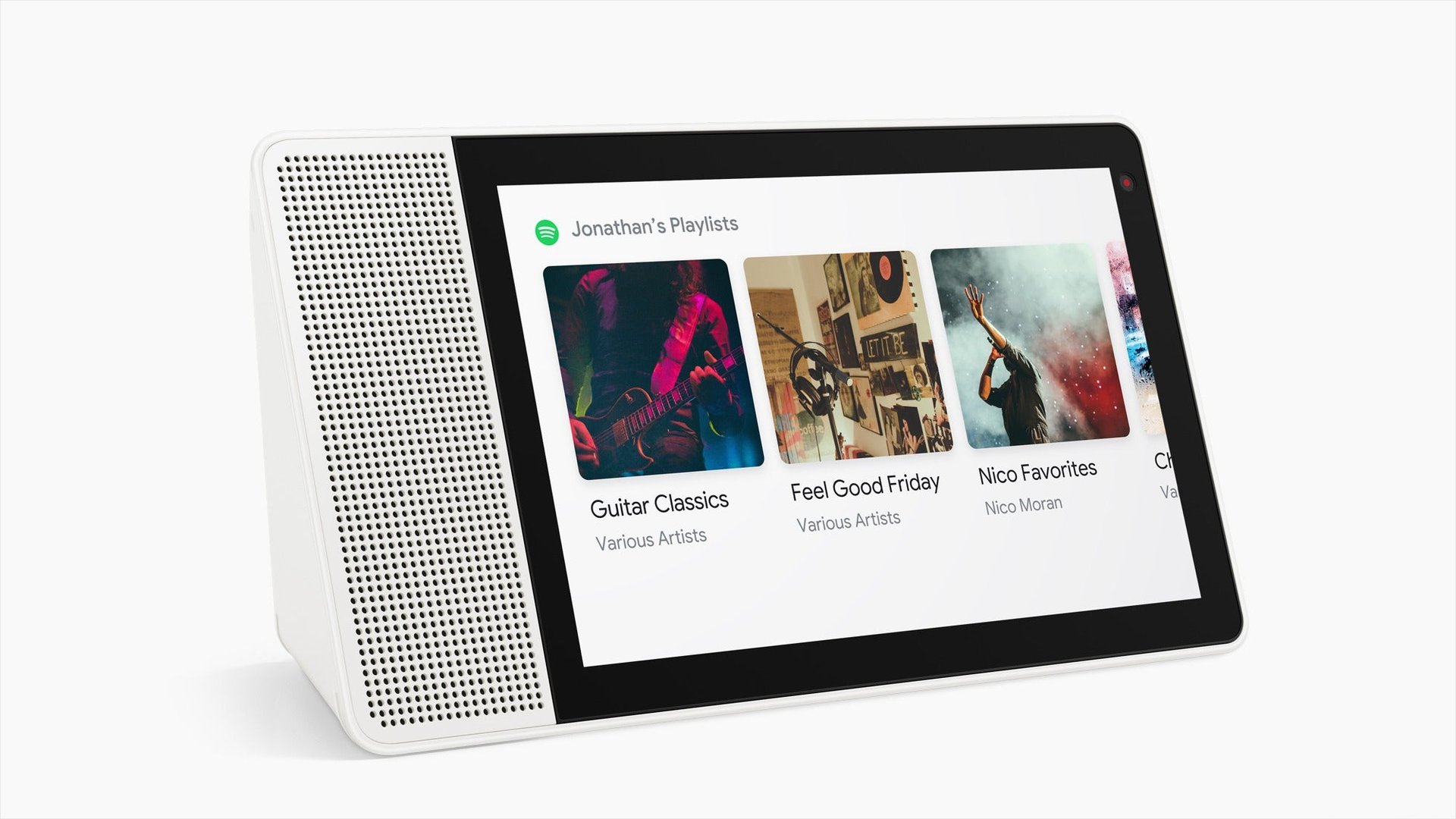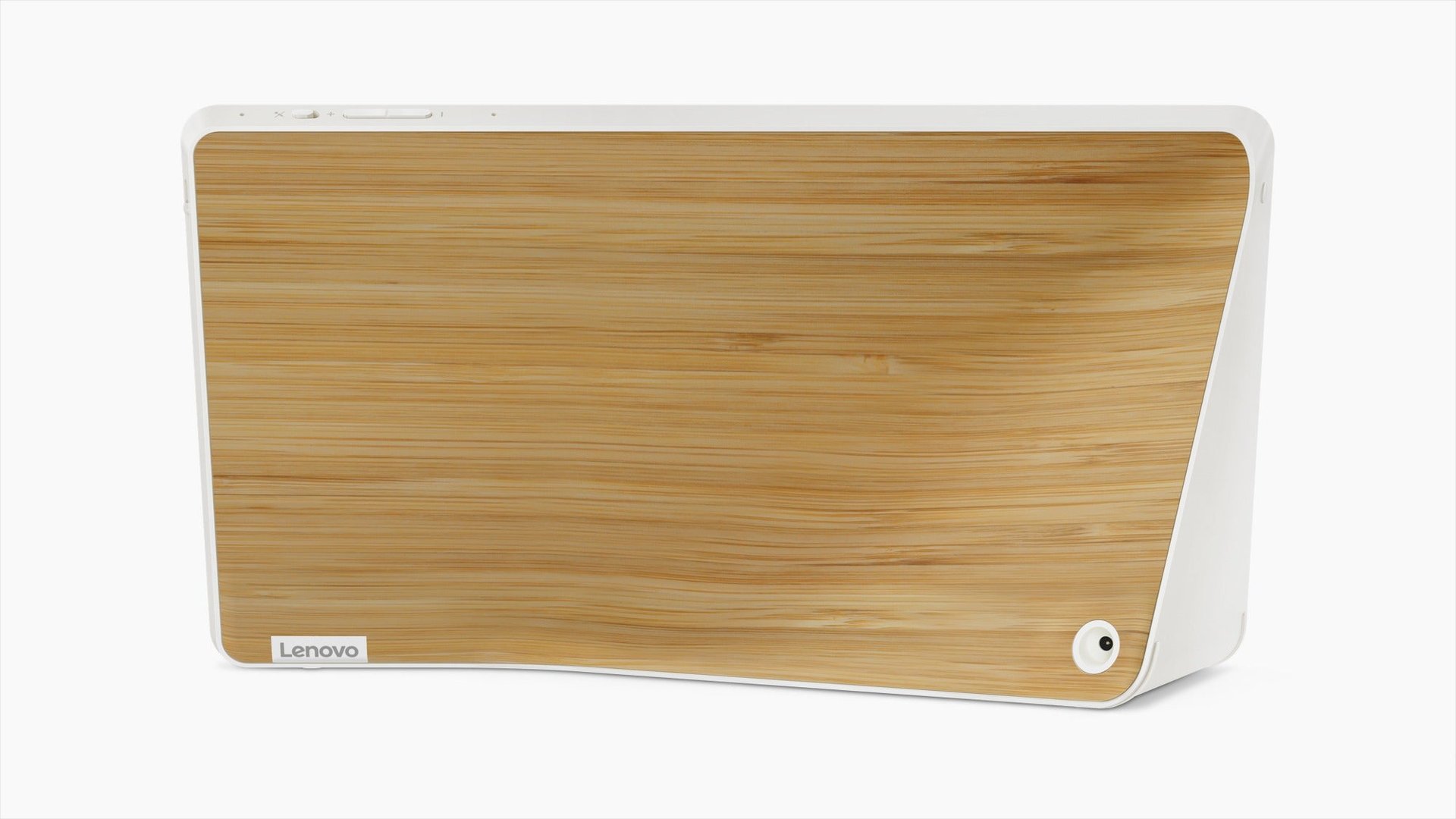Lenovo’s new smart display is what Amazon’s should have been
Since the Amazon Echo first became a sleeper hit in 2014, Google has fought its way to 30% of the US smart-speaker market on the strength of its Home and Home Mini. But Amazon continues to lead, last year debuting the Echo Show and Echo Spot, both of which feature display information beyond what Alexa tells you. (If you ask about the weather, for example, Alexa will tell you the day’s forecast, while the screen shows the forecast for the whole week.)


Since the Amazon Echo first became a sleeper hit in 2014, Google has fought its way to 30% of the US smart-speaker market on the strength of its Home and Home Mini. But Amazon continues to lead, last year debuting the Echo Show and Echo Spot, both of which feature display information beyond what Alexa tells you. (If you ask about the weather, for example, Alexa will tell you the day’s forecast, while the screen shows the forecast for the whole week.)
Google hasn’t made anything like it—and now it might not need to. On July 27, Lenovo will release the Smart Display, a cross between a smart speaker and a tablet that runs on Android Things, a version of Google’s mobile operating system designed specifically for smart devices. I spent the past week with a Smart Display, and found it a useful addition to my daily life—far more so than an Echo Show.
Lenovo’s new device, which the Chinese tech company first showed off in January at the CES trade show in Las Vegas, is comprehensive, easy to use, and a joy to look at. The Smart Display’s… display doesn’t feel like something that needs to be hidden away in a corner. It doesn’t look like an air freshener (like Google’s) or a TV from the 1980s (like the Echo Show), but instead seems specifically designed for a kitchen island or living-room side table. The display comes in two sizes, 8-inch and 10-inch, with the larger model featuring a rather pleasant-looking bamboo back.

Unlike the Echo Show, the Smart Display’s interface feels familiar and intuitive. You say “OK Google” or “Hey Google” to activate the built-in digital assistant, and it can pull up just about any piece of information in Google’s vast library of knowledge. The Smart Display can also answer follow-up questions: If you ask it what today’s weather is, follow up by just saying, “What about tomorrow?” The display can also set timers, play music (on a decently loud built-in set of speakers), and control smart-home devices.
But what really sets the display apart is its touch interface, backed up by Google’s services. You can say, “Hey Google, play Chance the Rapper,” and it’ll start playing his latest songs from YouTube. You can then tap on the screen, flick up to see what other songs are queued up on YouTube, and tap another. Similarly, when you ask Google questions, you can usually tap onto the screen to learn more about the topic you’ve asked about.
To be fair, for its Echo devices Amazon had to build something from scratch, whereas Lenovo incorporated a Google operating system that has evolved out of a decade of work. In this case, it’s a notable advantage: Google’s breadth of knowledge and tie-ins set the device apart. You can get step-by-step cooking recipes, replete with videos from YouTube; make voice calls with anyone who has Google’s Duo messaging app installed on an Android device; pull in photos from Google Photos; and connect a Google calendar. There’s also music, news, and podcasts from a range of sources, including YouTube Music, Spotify, Pandora, CBS, CNBC, and TuneIn.
The assistant also has pre-programmed routines that (who?) I liked engaging. I can say “Good morning,” and the device will tell me the day’s weather and how my commute is looking, followed by a short video on the top headlines from Reuters. It has a similar “Good night” routine that plays nighttime sounds, like crickets chirping; it was kind of cute once, but I eventually told it to stop.
The display also has another advantage over other smart devices on the market: It’s not actively trying to spy on you, as far as I can tell. There’s a physical shutter over the camera that you can open and close when you want to use it, so you can rest easy knowing no one could possibly be hacking the device to see you getting changed or dancing to something embarrassing. The microphone also has a mute button.
Lenovo’s Smart Display is a great example of the Android win-win: Manufacturers can piggyback on Google’s consumer-friendly software and focus on building their own hardware, while consumers get innovative new devices powered by software and apps they already know and enjoy. At $200 for the 8-inch version and $250 for the 10-inch model, Lenovo’s device is also competitively priced against Amazon’s. While Google may release its own answer to the Echo Show at some point, the Smart Display shows that, to win the smart-home race, it doesn’t really have to.